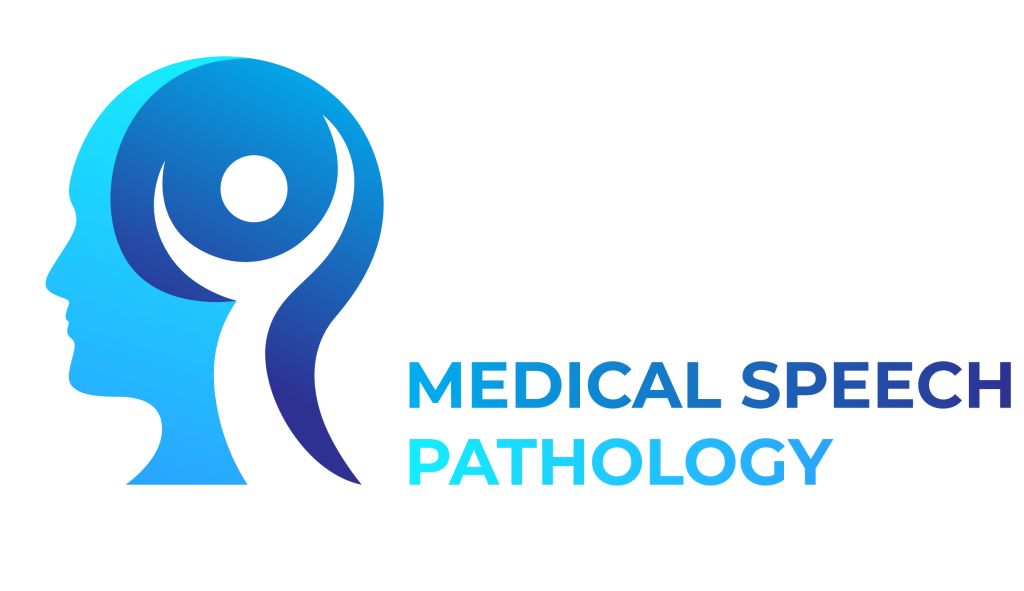Ehlers-Danlos Syndrome (EDS) is a group of inherited connective tissue disorders that can significantly impact communication and swallowing, beyond the better-known symptoms of joint hypermobility and skin elasticity. Individuals with EDS often face communication and swallowing difficulties and can benefit from input from an EDS-aware Speech Pathologist. This guide explores the impact of EDS on communication and swallowing and outlines some possible strategies for intervention from a Speech Pathology perspective, emphasizing the importance of a multidisciplinary approach.
Communication issues in EDS
People with EDS often experience voice disturbances (dysphonia) due to hypermobility and incoordination of the vocal cords. Approximately 28% of adults and 48% of children with EDS report difficulties with sustaining their voice and with speech (Birchall et al., 2021; Rimmer et al., 2008). This can be attributed to the reduced mobility of the cricoarytenoid joint, loss of mucosal wave, and changes in the collagen of the vocal folds. In vascular EDS, tissue fragility can cause recurrent hemorrhagic polyps and acute ruptures of the vocal fold epithelium (Birchall et al., 2021).
Additionally, people with EDS may experience laryngospasm, an acute failure of the vocal cords to open, leading to breathing difficulties and emergency hospital visits. This condition is hypothesized to result from subluxation of the crico-arytenoid joints or mechanical failures in the laryngeal superstructure (Birchall et al., 2021).
People with EDS also commonly experience hypermobility or instability of the temporomandibular joint (TMJ), which can which can lead to difficulties with articulation of speech, and significant discomfort and pain impacting communication performance.
Swallowing Difficulties in EDS
Swallowing difficulties, or dysphagia, are also common in EDS. All stages of the swallowing process (oral, pharyngeal, and oesophageal) can be affected due to impaired tongue movement, oesophageal hypomotility, and structural abnormalities such as a high-arched palate and temporomandibular joint disorders (Biviano et al., 2019; Birchall et al., 2021). These impairments lead to difficulties in managing the bolus during the oral phase, coordinating the swallow during the pharyngeal phase, and moving the bolus efficiently through the oesophagus (Birchall et al., 2021).
The incidence of dysphagia appears to be higher in women with EDS. A study of 31 women with hypermobile EDS (hEDS) found that 64% reported dysphagia (Biviano et al., 2019). The study used videofluoroscopic examination and oesophageal high-resolution manometry (HRM) to identify the mechanisms underlying dysphagia. Results showed significant impairments in tongue movement and oesophageal motility, with 81% of patients experiencing issues with tongue retropulsion and 42% showing oesophageal hypomotility. Women with EDS also had significantly higher rates of food allergies/intolerances, and a higher prevalence of eating disorders and disordered eating behaviors compared to the control group.
In addition, individuals with Ehlers-Danlos Syndrome, particularly the hypermobility type, often experience significant gastrointestinal and nutritional issues. These GI manifestations can include structural anomalies such as abdominal hernias and organ prolapses, as well as functional disorders like gastroesophageal reflux, and irritable bowel syndrome (Castori et al., 2015). In a study conducted by Abu-Farhaneh et al. (2020), researchers examined gastrointestinal symptoms and disorders of gut-brain interaction (DGBI) in patients with EDS. The retrospective chart review included 75 patients, predominantly female, with a mean age of 36.4 years. The most common GI symptoms reported were abdominal pain (85.5%), bloating (64.4%), heartburn (61.8%), and constipation (57.9%). Additionally, a significant number of patients experienced nausea, diarrhea, regurgitation, early satiety, vomiting, and fecal incontinence. These symptoms not only contribute to chronic pain and malnutrition but also significantly impact overall quality of life.
Dysphagia is more likely to occur during periods of EDS exacerbation, emphasizing the need for comprehensive and adaptable management strategies (Stonick et al., 2022).
Further considerations – MCAS & Dysautonomia
Mast Cell Activation Syndrome (MCAS) and dysautonomia are common comorbidities in individuals with EDS and can significantly impact their presentation and management in terms of communication and swallowing.
Mast Cell Activation Syndrome (MCAS): MCAS can lead to widespread inflammation and allergic reactions, affecting the respiratory and gastrointestinal systems. Symptoms such as throat swelling, increased mucus production, and gastroesophageal reflux can exacerbate swallowing difficulties and voice problems. Management may include the use of antihistamines, mast cell stabilizers, and dietary modifications to reduce triggers (Stonick et al., 2022).
Dysautonomia: Dysautonomia involves dysfunction of the autonomic nervous system, leading to issues such as postural orthostatic tachycardia syndrome (POTS), gastrointestinal dysmotility, and respiratory irregularities. These symptoms can complicate both speech and swallowing by causing fatigue, breathlessness, and reduced coordination of the muscles involved in these processes. Management may involve medications to regulate blood pressure and heart rate, as well as physical therapy to improve autonomic function (Stonick et al., 2022).
Management strategies
Management of communication and swallowing problems in EDS requires a multidisciplinary approach. Collaboration between Speech Pathologists, Ear Nose & Throat (ENT) doctors, Gastroenterologists, Dentists, Physiotherapists, Dietitians, Occupational Therapists and others is essential. Key management strategies include:
- Instrumental swallowing assessment: Objective imaging of the oral, pharyngeal and oesophageal phases of the swallowing can identify underlying structural or functional issues and guide a targeted management plan. A Speech Pathologist can arrange a Videofluoroscopic Swallow Study (VFSS – a video X-ray of the swallow focussing on the stages involving the mouth and throat) or a Flexible Endoscopic Evaluation of Swallowing (FEES, where a camera is placed through the nose to sit in the throat while observing the swallow.). Your Doctor may also discuss getting a Barium swallow (similar to a VFSS but more focussed on the oesophageal phase) or a Gastroscopy, where a camera is introduced into the oesophagus while under sedation to directly visualize the oesophagus and stomach. Other instrumental assessments that may be considered include High-Resolution Manometry (HRM), which measures pressure changes within the oesophagus during swallowing, and Oesophageal pH monitoring, which assesses acid exposure in the oesophagus.
- Manual Therapy and Injections: For issues like hyoid bone dislocation, manual therapy, targeted exercises, and in some cases, steroid injections under local anesthesia can provide relief (Birchall et al., 2021).
- Voice therapy: Voice therapy aims to address the specific voice issues experienced by individuals with EDS, such as hoarseness, vocal fatigue, and breathiness. Techniques used in voice therapy may include vocal exercises to strengthen the vocal cords and improve their coordination, resonance therapy to optimize vocal quality, and breath support exercises to enhance respiratory control during speech. Additionally, vocal hygiene education can help to maintain healthy vocal habits and avoid behaviours that could strain the voice.
- Diet Consistency Modification: Modifying the consistency of foods and liquids can improve the safety and comfort of swallowing for individuals with EDS. Following instrumental assessment, Speech Pathologists can discuss suitable textures, such as softer foods or thicker drinks, to reduce the effort required for chewing and swallowing, making mealtimes more manageable and enjoyable.
- Dysphagia Rehabilitation: Dysphagia rehabilitation involves targeted exercises and techniques to strengthen the muscles involved in swallowing and improve coordination. Techniques such as the Mendelsohn maneuver, effortful swallow, and the Shaker exercise can be used to address specific swallowing deficits. Additionally, compensatory strategies like altering head posture or using adaptive utensils may be recommended to facilitate safer and more efficient swallowing.
- Inspiratory Muscle Training (IMT): IMT has been shown to improve lung function, exercise capacity, and inspiratory muscle strength in patients with hEDS. A randomized controlled trial demonstrated that IMT significantly improved inspiratory muscle strength, six-minute walking distance, and forced expiratory volume in one second (FEV1) in hEDS patients (Reychler et al., 2019).
- Respiratory Support: For breathing difficulties due to tracheobronchomalacia, conservative management with respiratory physiotherapy and continuous positive airway pressure (CPAP) is recommended (Birchall et al., 2021).
- Dietetics Input: Dietitians provide valuable input, especially in managing slow gastric motility and inflammation of the oesophagus and stomach caused by reflux and mast cell disorders (Birchall et al., 2021).
- Education and Support: Educating patients and their families about EDS, its impact on communication and swallowing, and the strategies to manage these issues is crucial. Given that EDS is still poorly recognized, underdiagnosed, and often misunderstood, many patients have been told for years that their symptoms are “all in their head.” Providing accurate information and validation can be transformative. Support groups and counselling services can also offer emotional support and practical advice, helping patients cope with their condition and connect with others who share similar experiences.
Conclusion
Expanding awareness and understanding of the complex interplay between EDS and its impact on communication and swallowing is vital. There is a need for more data from cross-sectional surveys and clinical trials to inform better assessment and treatment strategies in this evolving field.
If you would like to book an in-person or telehealth consultation with Medical Speech Pathology, or are a Speech Pathologist seeking support for working with people with EDS, we would be happy to hear from you – you can make a referral here or email us at info@medicalspeechpathology.com.au.
Visit the Ehlers Danlos Society for more information about EDS and to find EDS-aware practitioners in your area.




